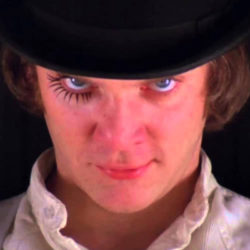I enjoyed the Crafting the Map Screen feature because it gave a thorough look at making the game: a combination of art, design, and code required for even a simple feature. Similarly, my game’s intro sequence needs art, design, and code. But it also has one more element: writing. I’ll break down each of these aspects in their own posts.
For this first part, I want to share the core idea behind my intro scene, and thus its writing. I’ll outline the purpose of an introduction, tell you where I got my inspiration, and detail my own sequence. Fair warning: the third section of this post contains minor story spoilers! (but, it’s only for the first couple minutes of the game, so I think we’re okay!)
A Proper Introduction
Before writing an introduction, we need to know our aim. If we start any story with its climax, we haven’t yet created enough weight to justify any emotional attachment. But if the intro is slow-paced, players might quickly lose interest. The introduction must present themes and foreshadow the rest of the story, while hooking an audience to want to know more. It’s the boulder chase scene in Raiders of the Lost Ark, or the the menacing dolly shot in A Clockwork Orange.
Many mysteries show the crime itself in the introduction (Columbo, Phoenix Wright, etc.) — this captivates their audience, foreshadows future conflict, and (usually) doesn’t involve the detectives themselves (so it follows that the detectives are still unaware of the crime).
It’s a great approach, but it doesn’t work for my game. I don’t want my player knowing the culprit before the detective does. It would create dissonance in the player’s relationship with the detective, when instead I want my player to get lost in the world and think of the detective as an avatar for themselves. I need another type of introduction to achieve this goal.
Feline Inspired
I took a page from Robert Altman’s 1973 rendition of Raymond Chandler’s book The Long Goodbye. At the start of the film, we see Philip Marlowe argue with his cat. Marlowe complains about the cat aloud, to himself, and talks to it as though it were human. It’s a comic scene, displaying the eccentric side of Marlowe. But it also starts a theme that’s carried throughout the film: there are few people with such an intimate relationship to Marlowe as that cat. He can’t connect with anybody. It’s as if he’s completely out of his time — a hardboiled character, with car and suit to match, more at ease in a 1920s novel than in a sunny LA film.
Altman juxtaposes this light-hearted cat sequence by splicing shots of a mysterious figure. This second character has blood on his face and looks tense (with music to match) — implying perhaps a murder? Again, foreshadowing, and engaging the audience from the beginning.
Do It Yourself (Spoilers Ahead!)
My main character is a similar detective out of her element (a woman private eye in the 1920s), and few of her relationships have meaningful depth. I love the cat metaphor, so I’m stealing it whole cloth! I show a stray cat in her apartment, looking for food, with whom she talks aloud.
Unlike a film, however, I want my players to interact with the intro. Using drastic cuts would only complicate the scene for my players, who have to learn their interactions while still understanding the story. Instead, I decided to add tension to the cat conversation itself.
My players talk with the cat in the introduction, selecting conversation options like they will in the rest of the game. But I don’t show the cat right away — thus my players don’t immediately know they’re talking with a cat! The conversation is tense and dramatic — I even imply that a knife fight might break out! Until, the talk ends abruptly and I reveal the cat for what it is. The scene creates tension, adds comic relief, establishes themes for the rest of the game, and foreshadows later altercations.
Most importantly, it hooks my players for the longer journey ahead!
I hope you enjoyed this breakdown! As always, I feel I raced through these explanations — but I’m already at several hundred words, so I think I should stop. If you have any questions, feel free to ask!
Background image from A Clockwork Orange (1971)
First image from Murder by the Book (1971)
Second image from The Long Goodbye (1973)



Comments
2 responses to “Making an Entrance
Part 1: The Writing”
[…] an intro sequence needs writing, design, art, and code. A few weeks ago I outlined the importance of setting mood, foreshadowing themes, and hooking players with the […]
[…] like the other elements of the introduction, the visual style has to grab the players. Sure, […]